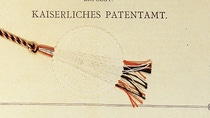Who we are
Cooperative Research - Formula for Success
Throughout BASF’s history, prominent research milestones result from collaborations with scientists, universities or research institutes. However, these collaborations only recently begin to enjoy strategic significance.
In the very beginning, BASF manufactures products under license or copies already known processes but recognizes that this strategy is not sufficient for a sustainable future. In-house scientific research is essential for innovative products.
Therefore, BASF names Heinrich Caro (1834–1910) the first head of research in 1868, only three years after its founding. The cornerstone is laid for the continued expansion of BASF’s own research and for the resulting development of numerous innovative products. In this way, BASF represents the “scientification” of the economy starting in the nineteenth century – a perfect example of chemistry as “science based industry.”
At the same time, BASF’s example shows that the exchange of knowledge between industry and science provides important impulses. Successful cooperation with academic research⎵runs like a golden thread through its history. Some outstanding BASF innovations, such as ammonia synthesis, only come about through collaboration with external scientists.
Unlike today, these collaborations maintain a selective character for a long time, are not developed in a systematic manner, and do not enjoy strategic significance. This is also true for BASF researchers engaging in interdisciplinary collaboration. From today’s perspective, this is a matter of course but at the start of the 20th century it is still more of an exception.
In 2018, BASF maintains an international and interdisciplinary research network with around 70 of its own research locations worldwide and around 600 cooperation partners – universities, research institutes, and businesses.



